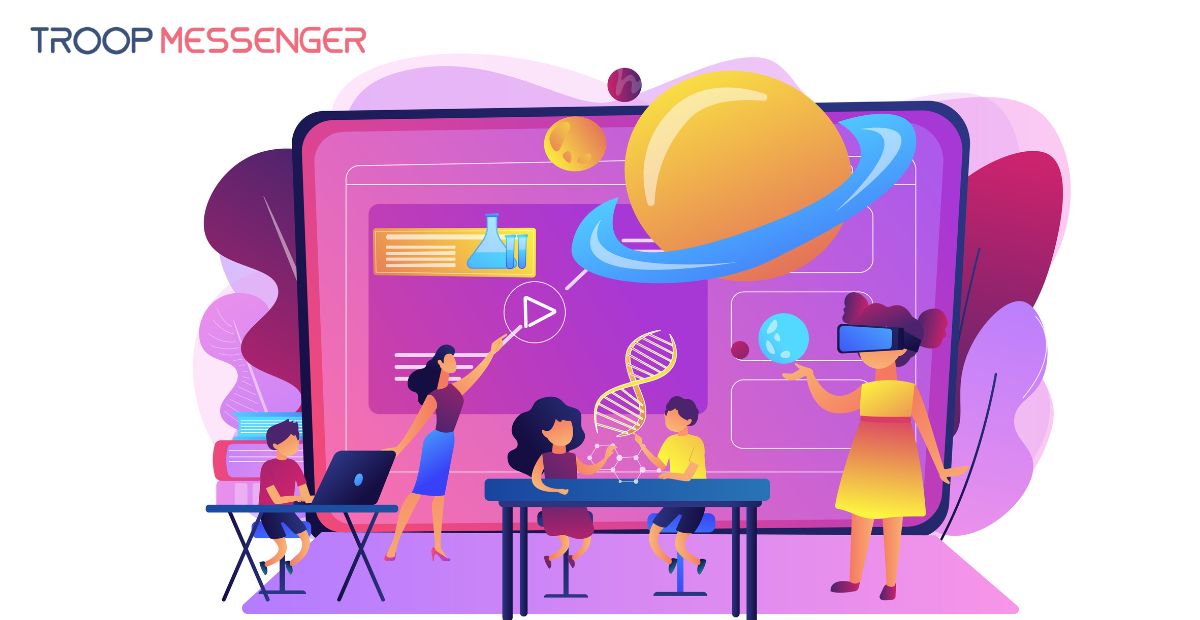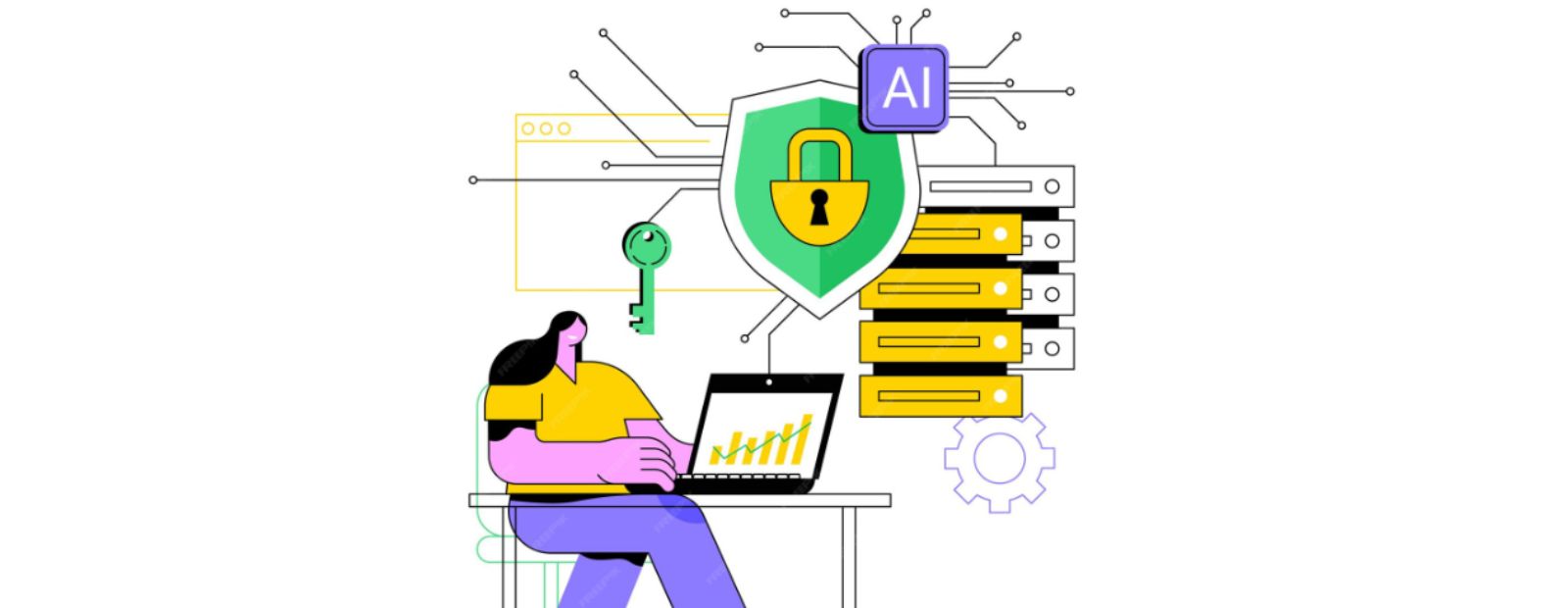Connect with us

Smart Classrooms and Connected Transit: The Next Era of Tech Integration
Technology moves fast, but it doesn’t always meet our everyday needs. Classrooms still rely on outdated tools that limit learning. Public transit often feels confusing and disconnected. Students and travelers alike deserve better solutions for education and mobility. Did you know smart technology can reshape these spaces? From AI-based teaching to real-time bus tracking, advanced systems bring convenience and efficiency. They make life easier for teachers, students, commuters, and operators alike. This blog examines how technology addresses gaps in classrooms and transit systems. You’ll discover the key advancements driving change—and how they solve common challenges. Keep reading; progress is just around the corner!
The Role of Smart Classrooms in Modern Education
Smart classrooms integrate technology with teaching to make learning more engaging. They adjust to students' needs and promote involvement through digital tools.
IoT-Enabled Learning Devices
IoT-enabled learning devices are changing the way classrooms operate. Interactive whiteboards, smart tablets, and connected projectors allow students to access real-time information. These tools provide teachers with improved methods to present lessons and monitor progress. Sensors in IoT devices monitor classroom conditions like lighting or temperature to create an ideal environment.
Devices with IoT integration also gather data on student performance. Teachers can adjust teaching methods based on these insights without guesswork. As learning becomes more personalized, businesses investing in educational technology see increasing demand from schools aiming to modernize more rapidly than ever before. Next, examine how **customized learning experiences through AI** meet individual needs in education systems worldwide!
Personalized Learning Experiences Through AI
AI customizes lessons based on a student's strengths and weaknesses. It examines performance data to find areas that need improvement. For instance, it can modify the complexity of reading materials for students struggling with comprehension or recommend additional practice problems for those learning math.
This method saves time for teachers by automating repetitive tasks like grading quizzes. At the same time, students receive targeted support where it’s most needed. Personalized tools also make learning more engaging with interactive content. AI-driven platforms use algorithms to suggest videos, quizzes, or simulations tailored to individual learning paths.
In classrooms integrating technology into education, students often report higher motivation levels as materials feel relevant to their interests and pace of study. Business owners investing in educational technology may notice improved outcomes, resulting in better-prepared employees in the future.
Virtual Classrooms and Distance Learning
Virtual classrooms overcome geographical limitations in education. Businesses can benefit by providing tools or services that support digital learning environments. Platforms with educational technology enable live lessons and interactive discussions, ensuring learning is accessible at any time and location. Distance learning excels through personalization and convenience. AI-driven systems adjust to individual student needs, encouraging stronger participation without requiring physical presence. This method reduces costs associated with infrastructure while broadening learning opportunities worldwide.
Real-Time Attendance and Security Systems
Smart classrooms now track attendance with IoT-connected devices. These tools record who enters and exits in seconds, reducing errors. Facial recognition adds a layer of accuracy by identifying students instantly. AI-driven security systems also monitor unusual behavior during class hours. Cameras alert staff about unauthorized access or potential threats, ensuring that student safety remains top-notch.
Connected Transit Systems: Enhancing Mobility and Accessibility
Connected transit systems improve how people move by linking transportation with advanced technology—read on to see how this alters the approach.
Integration of IoT in Public Transportation
IoT is changing public transportation by connecting vehicles, passengers, and infrastructure. Sensors track buses, trains, and stops in real time. Commuters can view accurate schedules through apps that update immediately if delays happen. Digital payment systems make ticket purchases faster without cash or paper. Smart sensors monitor vehicle wear to predict maintenance needs before breakdowns occur. Stations use IoT tools for crowd management during rush hours by redirecting traffic flows. This tech enhances safety and reduces waiting times for riders while improving overall fleet efficiency. Let’s now explore smart traffic management systems enhancing urban planning efforts worldwide!
Smart Traffic Management Systems
Cities are adopting intelligent traffic technology to reduce congestion. Sensors and cameras gather live data, allowing systems to adjust traffic lights according to current flow. These adjustments shorten wait times at intersections and enhance fuel efficiency. Integrated transportation networks also contribute to managing crowded urban areas. Advanced systems reroute vehicles during accidents or construction, avoiding gridlocks. Business owners benefit as improved traffic conditions lead to quicker deliveries and more satisfied customers.
Real-Time Tracking and Scheduling Apps
Transit systems use real-time tracking and scheduling apps to provide precise arrival times. Passengers receive updates about delays, cancellations, or route changes directly on their devices. These apps enhance convenience by allowing users to track vehicles in motion. They also assist businesses in planning operations effectively. Operators handle fleets efficiently with information from these tools. Routes are adjusted quickly based on traffic or demand patterns. By providing simple access to schedules, these apps reduce wait times and improve satisfaction for travelers. Electric and autonomous vehicles further enhance the transit experience while integrating smoothly with advanced systems.
Electric and Autonomous Vehicles in Transit
Real-time tracking tools have created opportunities for smarter transit systems, making journeys more predictable. Electric and autonomous vehicles enhance this by reducing dependency on fossil fuels while providing convenience. Bus fleets with electric engines lower operational costs and greenhouse gas emissions. Cities like Los Angeles already use thousands of battery-powered buses to achieve eco-friendly goals.
Self-driving shuttles are being carefully tested in controlled environments across urban centers. These autonomous vehicles aim for safer commutes by reducing risks from human error in driving. Advanced sensors enable precise navigation even in crowded streets or complex traffic scenarios. Businesses investing in smart transportation can reduce long-term costs and enhance service reliability.
Key Technologies Powering Smart Classrooms and Connected Transit
Technology drives both education and transit into a smarter future. These advancements create faster, more efficient systems that keep us connected.
Internet of Things (IoT)
IoT connects smart devices to classrooms and transit systems. Sensors observe classroom conditions, such as temperature or lighting, to improve learning environments. Connected tools simplify attendance tracking and enhance safety with real-time alerts. In transit, IoT systems provide live tracking of buses and trains. Smart sensors anticipate maintenance needs for vehicles before breakdowns occur. This improves operations while minimizing delays for commuters.
Artificial Intelligence (AI)
AI improves both learning and transit by delivering smarter solutions. In connected classrooms, it creates personalized lessons designed to meet individual student needs. Teachers save time with automated grading and performance tracking tools. Virtual tutors powered by AI offer round-the-clock assistance in various subjects.
In public transportation, AI refines routes by analyzing traffic patterns for better efficiency. Real-time data predictions help passengers avoid delays through updated schedules. Intelligent systems reduce energy usage in electric buses while ensuring smoother operations. These advancements lead directly to the role of Big Data and Analytics.
Big Data and Analytics
Big Data supports intelligent classrooms and connected transit systems in making more informed decisions. In education, it monitors student progress, preferences, and challenges to customize lessons. For transit, it examines commuter habits and traffic patterns to improve routes. Analytics reveals hidden patterns from extensive amounts of information. Schools use this data to forecast academic success or identify at-risk students early. Transit authorities depend on analytics for real-time updates that enhance travel efficiency during peak hours.
Cloud Computing
Cloud computing centralizes data, applications, and services online. It offers schools and transit systems adaptable storage solutions. Teachers can access digital classrooms from anywhere without requiring bulky hardware. Public transportation benefits as well. Operators rely on cloud-hosted platforms to manage schedules and monitor vehicles in real time. The stored data enables quicker updates for routes or delays. This technology minimizes downtime while enhancing system dependability.
Benefits of Tech Integration in Education and Transit
Smart tools create more efficient learning and traveling experiences for everyone. They assist in addressing challenges while conserving time and resources effectively.
Enhanced Learning Outcomes
AI tools have customized education like never before. Teachers can monitor progress in real time, designing lessons to suit each student’s needs. These personalized approaches lead to better information retention and practical skill-building. Interactive learning devices keep students interested during lessons. Tools such as AR and VR bring subjects to life, helping users understand complex ideas faster. This technology not only improves comprehension but also enhances overall achievement levels in connected classrooms.
Improved Accessibility and Inclusivity
Smart classrooms provide tools like assistive technology for education, enabling students with disabilities to participate actively. Voice recognition software and text-to-speech devices simplify learning for everyone. Digital classrooms also eliminate barriers by offering multi-language support and customized interfaces. Connected transit systems enhance mobility for those with physical challenges or limited access to transportation. Real-time tracking apps offer updates, while wheelchair-accessible electric vehicles broaden options. These developments make sure that no one is excluded from modern cities.
Increased Efficiency in Transit Systems
Making transit systems more efficient saves time and resources. Connected transportation powered by IoT ensures buses, trains, and other vehicles follow well-planned routes. Real-time data minimizes delays by helping drivers avoid traffic jams or accidents. Real-time tracking apps also keep passengers informed about arrivals, reducing long waits at stops. Self-driving vehicles further improve efficiency by operating without human errors like missed signals or unnecessary halts. These advancements reduce operational costs while improving passenger satisfaction.
Better Resource Management
Smart classrooms help schools manage resources effectively. IoT sensors adjust lighting and temperature automatically, reducing energy waste. Real-time attendance systems also save time and limit paperwork. Connected transit optimizes fleet usage. Predictive analytics track maintenance needs, avoiding breakdowns and costly delays. These technologies foster smoother operations overall, leading to the next advancements in mobility solutions.
Challenges in Implementing Tech Integration
High costs and technical challenges make adopting new tech tricky—keep reading to learn how businesses can address these issues directly.
High Initial Costs
Installing smart technology in classrooms or transit systems often demands significant upfront investment. IoT devices, AI tools, and cloud-based platforms require specific hardware and software. For example, setting up digital classrooms with interactive tools or upgrading buses with real-time trackers can strain budgets.
Small businesses or schools may struggle to balance these costs against long-term benefits. Governments and the private sector must consider subsidies or partnerships to reduce this financial burden. Addressing cost barriers creates opportunities for tackling critical challenges like data privacy and security concerns.
Data Privacy and Security Concerns
Hackers target interconnected systems in classrooms and transit, which puts sensitive data at risk. Smart devices collect personal information, schedules, and even payment details. Unauthorized access to this data can harm users and businesses alike. Business owners must prioritize strong encryption protocols and regular software updates for IoT systems. For added protection, reviewing seasonal risks, such as those outlined in ISTT’s holiday cybersecurity insights, can help businesses stay alert during vulnerable times. Clear policies about data collection build trust with clients. Without proper safeguards, user privacy could be compromised easily. Moving forward requires examining infrastructure limits tied to these technologies.
Infrastructure Limitations
Poor internet connections hinder digital classrooms and connected transit systems. Schools in rural areas lack the broadband capacity needed for virtual reality in education or IoT-enabled learning devices. Public transportation networks, especially in older cities, often cannot support smart technology integration. Aging buildings also increase challenges. Many schools have outdated electrical systems that cannot handle advanced academic technology tools. Similarly, old transit stations struggle to accommodate electric and autonomous vehicles or real-time tracking systems. Investing in upgrades is crucial but costly for business owners considering tech advancements.
Need for Training and Technical Expertise
Upgrading infrastructure is only half the battle; skilled staff are essential to maintain and operate these advanced systems. Teachers, drivers, and administrators must learn how to handle smart technology like IoT devices and AI-powered tools. Businesses should invest in regular training programs for employees at all levels. For those seeking assistance, partnering with providers offering reliable tech support in Chicago ensures smoother onboarding, ongoing training, and technical troubleshooting as systems scale.
Future Trends in Smart Classrooms and Connected Transit
Technology continues to blur the lines between classrooms and transit systems. Expect faster, smarter tools shaping how we learn and move daily.
Advanced AI-Powered Learning Systems
AI-powered learning systems adapt to individual student needs. These systems analyze progress and adjust content in real time for better understanding. For example, AI tools can assess a student's weaknesses and recommend exercises suited to their skills. Such a method saves time by focusing on areas that need the most improvement. Digital classrooms also benefit from intelligent tutoring programs. Programs like these simulate personalized teacher interaction for students who need extra assistance. AI tracks participation during lessons, helping teachers identify struggles faster. Predictive analytics even forecasts performance trends, giving educators data-driven insights into classroom success rates.
Expansion of Autonomous Transit Networks
Advanced AI in classrooms sets the stage for autonomous transit systems. Cities now push hard to grow these networks, aiming for safer and more efficient travel options. Autonomous vehicles can reduce accidents by up to 90%, a significant advancement for urban mobility. Public buses, shuttles, and trains have already adopted automation. For example, Las Vegas introduced self-driving shuttles that operate within busy areas. These systems promise businesses reduced delivery costs and faster shipping times. Reliable schedules also give commuters peace of mind while cutting down delays across connected transit routes.
5G Connectivity for Seamless Integration
Expanding autonomous transit networks demands faster, more reliable communication. 5G steps in to bridge that gap with ultrafast speeds and reduced lag. It supports real-time data sharing between vehicles, traffic signals, and IoT devices. Connected classrooms benefit significantly as well. Teachers can use AR/VR tools without delays while students access cloud-based resources instantly. Businesses investing in education or transit will notice improved performance across systems powered by uninterrupted connections.
Sustainable Tech Solutions in Education and Transit
Schools and transit systems now favor renewable energy to reduce expenses. Classrooms adopt solar-powered tools, while buses operate on electricity or hybrid engines. These efforts lower carbon footprints and save money over time. Online platforms powered by cloud computing significantly reduce paper usage in education and scheduling systems for transit. Advanced devices in both areas help decrease waste and encourage environmentally friendly practices.
Conclusion
Technology is reshaping how we learn and travel. Smart classrooms are creating personalized, interactive learning spaces for students everywhere. Connected transit systems make transportation faster, safer, and more reliable. Together, these innovations promise a future that’s smarter and more connected than ever before. The next era of tech integration isn’t just coming—it’s already here.








